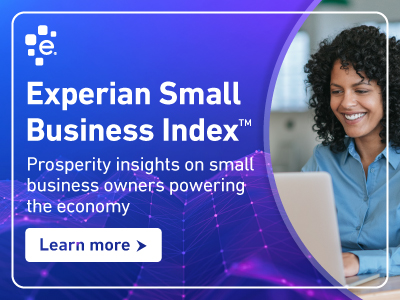Business Advice
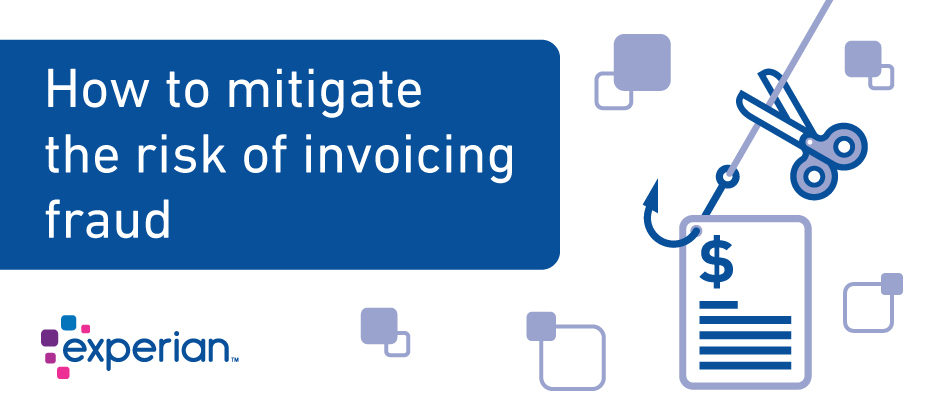
Paying an invoice without carefully reviewing the company and invoice can cost your business more than just the amount paid. Invoicing fraud is when a third party sends a false invoice to an organization or business. In some cases, the invoice is for services or products that were never purchased or delivered. Other times, fraudsters send a bill with inflated pricing or a duplicate bill. Paying just a single fraudulent invoice can set your company up for being a victim of larger fraud down the line. Often, criminals send a small invoice for a common product, such as office supplies, to test the company’s process to see if they will pay the false invoice. If the business pays the invoice, the criminals know that the company does not carefully review and research the invoices they receive. Criminals then send additional invoices to the company to continue the fraud. Julie Johnson, Research Specialist at Association of Certified Fraud Examiners (ACFE) says that invoicing fraud appears to be on the rise. “The rise in technology offers fraudsters new and creative ways to commit invoice fraud as well as more options to hide their tracks,” says Johnson. According to a Lloyds Bank survey, 52 percent of respondents have experienced invoiced fraud, with law firms, HR companies, and IT businesses being most at risk. The survey also found that only 20 percent of the companies reviewed their invoices, and 37 percent do not have a process to prevent invoice fraud. Johnson says that in her experience, small businesses are most at risk for becoming victims to invoice fraud. “SMBs are often targeted because they typically don’t have the same set of resources as larger companies. They also may not have a procurement process to determine figures and track invoices,” says Johnson. Red flags to help spot invoice fraud before you pay While fraudulent invoices often look similar in format, and even in name, to legitimate invoices, many fraudulent invoices contain warning signs. When processing invoices, keep an eye out for the following red flags: Business directory invoices – Many fraudsters send a fake invoice to a company or individual employee about a business directory renewal. Johnson said that criminals with this particular scam often become aggressive and contact the company demanding to be paid. Web domain renewals – Johnson says that another common fraud is invoicing for web domain renewals. These invoices typically come from a different company than the one that sent previous renewal notices but may have an official or similar sounding name. More frequent bills – Be aware of how often bills arrive for specific products and services. Johnson has found that fraudsters will send a bill for a product more often than the legitimate company. For example, if you pay your printer rental fee once a month, but receive two bills in March, then you should contact the company before paying. No purchase order – Real invoices almost always contain the corresponding purchase order. However, many fraudulent invoices do not include a purchase number. Preventing invoice fraud Because it is challenging to catch fraudsters and recover money paid, the best strategy is to incorporate safeguards into your invoice payment process. Here are four things you can do to prevent becoming a victim of invoice fraud: Verify the company name on each invoice — Fraudsters often use company names similar to those of reputable companies. If you are not familiar with the company, do a Google search. Johnson says that if there is no internet information on a company, that’s a good indicator that something is not right. Compare the receipt of goods and purchase order with the invoice — Since fraudsters send invoices for goods you never received, you will not have a receipt of goods for fraudulent invoices. Check the payable address for each invoice — Another scheme is for a fraudster to send a bill with the name of a company you do business with but use a different payable address. Instead of sending your payment to the legitimate company, you pay the fraudster. Even worse than the fact that you lost money, you likely still owe your legitimate vendor. Use Experian BizID for Verification — Experian customers can do a business verification using the BizID to verify the address and phone number matches what is on file with Experian. Performing verification using BizID can also check if the address is potentially vacant or if it is a residential address; both should be considered red flags. You can also do reverse-looks up using the address and phone to see if there are multiple businesses at both data points is another check to consider. If you determine that you have received a fraudulent invoice, Johnson says to remember that you are not legally obligated to pay for goods or services that you did not order. “If you receive harassing calls from companies about fraudulent invoices, they have no legal action against you,” says Johnson. “After verifying that it’s not a legitimate invoice, do not pay the invoice.” By taking steps to catch and prevent invoice fraud, your company can reduce its chances of becoming a victim.
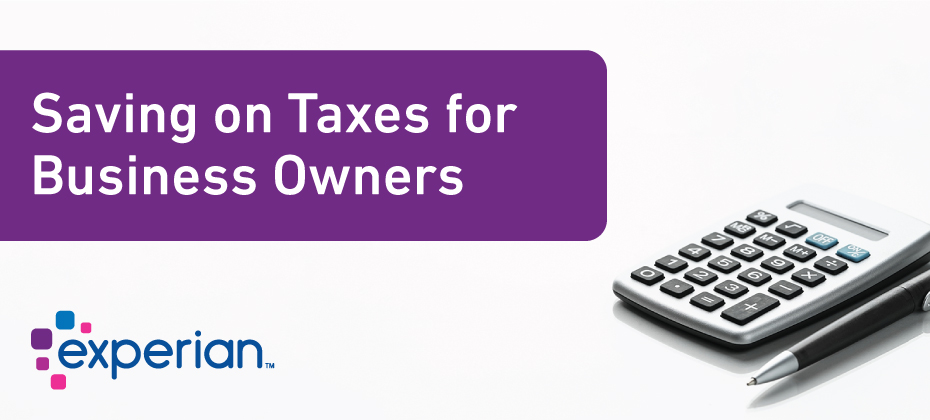
In this guest post, tax expert and author Barbara Weltman offers some tax saving tips for business owners as we head into tax season. You can find more posts by Barbara on her blog Big Ideas for Small Business. Tax season is upon us and business owners want to minimize their tax bill for 2018 to the extent allowed by law. Fortunately, there is considerable flexibility on tax returns to cut taxes and be positioned for 2019. Here are some business-related strategies to consider. Take advantage of new tax laws Your 2018 return will reflect changes made by the Tax Cuts and Jobs Act of 2017. The new rules applicable to you depend on your type of business entity: C corporations. The most dramatic change here is the cut in the corporate tax rate to 21%. Pass-through entities. For owners in partnerships, limited liability companies, S corporations, and sole proprietors, the most dramatic change here is the introduction of a new tax deduction called the qualified business income (QBI) deduction. This personal write-off effectively reduces taxable profits by 20% for those eligible to fully utilize it; many limitations apply. All businesses. Regardless of how the business is organized, write-offs for buying certain property have been enhanced, enabling all of the cost to be deducted up front. This is so even if the purchases are financed in whole or in part. And if you’ve continued paying wages to employees on family or medical leave and meet certain requirements, you may be eligible for a new tax credit. Make smart tax elections Size up where you stand in terms of profitability for 2018. As a generalization, if 2018 was a good year, you want to maximize your deductions; if it was not a good year, you probably want to save deductions where possible to use them as offsets when profitability returns. For example, if you’re in the black in 2018 and have placed newly acquired equipment in service in 2018, then use tax breaks—Section 179 deduction and bonus depreciation—to write off all of the cost on your 2018 return. Conversely, if you’re in the red, don’t elect the Section 179 deduction and opt out of bonus depreciation so you use regular depreciation to spread deductions over the recovery period of the property; hopefully, you’ll be profitable then and benefit more from these deductions. Discuss with your CPA or another tax advisor any accounting method changes to be made for 2018 in light of new rules under the Tax Cuts and Jobs Act. Making such changes can impact when deductions are taken and income is reported. Make last-minute retirement plan contributions If you have a qualified retirement plan in place (i.e., it’s been operating for years or you at least signed the paperwork for a 2018 plan by December 31, 2018), you can complete contributions to the plan up to the extended due date of your return. For example, if you are a sole proprietor with a solo 401(k) plan (you don’t have employees), your contribution for 2018 can be made up to the extended due date of your 2018 return (October 15, 2019) if you have a filing extension. If you don’t have a qualified retirement plan in place, it’s not too late to set up and fund a SEP. This type of plan, which can be used by any type of entity, requires you to include eligible employees and make contributions on their behalf up to the extended due date of your return. Figure your estimated taxes for 2019 The due date of your personal income tax return—April 15, 2019 (April 17th if you live Maine or Massachusetts)—is also the date for paying the first installment of estimated tax for 2019. If you file your 2018 return by this date, you can use the 2018 tax liability to gauge your 2019 estimated tax payments. As long as your 2019 estimated taxes are at least 100% of your 2018 liability (110% if your adjusted gross income in 2018 exceeds $150,000, or $75,000 if married filing separately), then you won’t owe any estimated tax penalties even if this estimate falls short of what you’ll actually owe on your 2019 return. In making your 2019 estimated, factor in: A higher Social Security wage base ($132,900 in 2019), which is part of self-employment tax. Cost of living adjustments to various tax breaks (e.g., retirement plan contribution limits, Section 179 deduction limitation). Conclusion Now that the dust has settled on the Tax Cuts and Jobs Act, some businesses may want to consider changing their form of entity (e.g., revoking an S election to become a C corporation). Keep in mind that such action has more than mere tax effect and shouldn’t be undertaken without considering not only all the federal and state taxes but also non-tax considerations.

In this guest post, Experian invited Alan W. Silberberg, Founder and CEO of Digijaks, a boutique Cybersecurity company, to share his views on how small businesses are vulnerable to cyber attacks, and some best practices every small business should adopt to protect their businesses. In 2017 61% of small businesses in the United States suffered some kind of cyber attack according to a report by Ponemon Institute. This number reflects an over 50% increase year to year in cybersecurity assaults on U.S. small businesses. There are many reasons why small businesses need cybersecurity — privacy, client trust, financial integrity, employee integrity, data integrity and the longevity of the business. For a small business owner, the topic of cybersecurity can seem overwhelmingly complex, but a basic understanding of cybersecurity is considered table stakes for running a business in 2018, particularly a business with any kind of online presence. But even those companies without an online presence can be quite vulnerable to cybersecurity threats. Threats include attacks launched through email, SMS and voice phishing, even insider threat attacks, or in person cybersecurity attacks. Small businesses are also very likely to suffer a reputational attack, where someone starts posting negative information in social media, websites, blog posts to harm your brand and or reputation. There are many kinds of cybersecurity tools and protocols available to the small businesses, and it would be impossible to boil the topic down in a single blog post. Rather, I’d like to outline some common sense protections to have in place for your business and illuminate some tactics hackers are employing when going after an unsuspecting business. Two-Factor Authentication Two Factor Authentication and or multi-factor authentication are needed for every sign in, every banking account, every insurance account, and if possible should be defacto, Two-factor authentication can be commonly known as using a secondary password or 4 digit code to authenticate login after your username and password are entered. While many consumers know two-factor authentication as something like SMS messaging post-login, many banks, and government players are moving into multi-factor authentication or relying on non-sms delivery. Firewalls There are multiple types of firewalls, including solutions specifically for mobile devices. Generally speaking, a firewall serves as the first or sometimes the second point of response for all incoming traffic including normal and business-related data/voice data. A firewall will defend a network, a device, or both against multiple kinds of cyber attacks. This could include things like malicious code insertion, denial of service, data stuffing, viruses and potentially malicious payloads in documents. Usually, a firewall will work best when configured onto a specific network or device to the needs of that specific instance. Not using a firewall is a novice mistake since they do capture and stop a large number of certain kinds of attacks. This being said, however, a smart attacker, using social engineering and or network monitoring, even network penetration can create malicious code designed to bypass firewalls. This is why layered cybersecurity approaches to even the smallest business can reap long-term rewards. The kinds of threats facing a small manufacturer versus a small FinTech company; are simultaneously different and the same. Each industry has specific devices, use cases, and technology that need securing in different ways. However, all small businesses need to use common sense and some basics; like strong password rules, firewalls, https websites, two-factor authentication, encryption for both data storage and transmissions like email or website. Common cyber hacks used on Small Business Social engineering attacks, for example, account for over 50% of all cybersecurity intrusions in one form or another. This includes social media, search results, email phishing, voice phishing, SMS phishing, and link bait. Then there is reverse social engineering, where someone learns enough about your business to be able to convince you they are the ones to solve your problems when they are really behind the hack in the first place. Social engineering attacks can occur in multiple instances. One kind might be directed at the CEO or CFO like in the “CFO Scam” otherwise known as the Business Email Compromise scam. Others can be directed at corporate websites, using fake comments, fake vendors and fake customers to deluge a small business with negative comments and create a bad vibe. Other social engineering attacks can occur through social media; with LinkedIn and Facebook especially often used to mine information about who is who, and what they do inside organizations. This can be used in good ways obviously, but also to inform attackers about potential vectors in. Social engineering can take the form of someone contacting your customer service representatives, with just enough information about a certain account, to request password changes. Or address changes. While this may be directed at a specific user or client, it affects your company directly and can result in litigation or loss of business or both. Reputation security of your brand, your key employees, and even the owner of a small business is just as important as cyber security and all business need to pay attention to external attacks that may start as, or be through search or social media. A small business might have up to date cyber security controls and protocols, but may still be open to reputation attacks. Set up Google alerts in your brand name, key employees names and your own. Monitor for any changes in search results which are often tied directly to reputation attacks. Create a social media plan that encourages employees to not share any work-related information, and trains people how to ascertain fake accounts versus real ones. It should not take a cyber horror story to get your company investing the time, money and training to protect your business., Protecting the security of the business is viewed as a positive thing to share with investors, due diligence teams from prospective partners, and or even with your clients. All of us want to do business with safe companies, or those perceived to be that way. In fact, there is a huge incentive. Recent studies show that on average 20-25% of US companies that suffer a data breach permanently lose clients. This number can increase dramatically if the breach is with a financial company, health care company or insurance company. So do not wait. Educate yourself, your colleagues and your employees. Learn what kind of cybersecurity you need and how it would be implemented across your business. Do not assume you won’t be attacked. Do not assume your own business is too small or not worth a hacker’s time. Take the necessary steps beginning with education. Then begin to form an action plan and next steps. Want to learn more? Resources for Cybersecurity information Here are some additional resources to consider when researching cybersecurity options for your business: U.S. Small Business Administration “Cybersecurity for Small Business” training program List of large and growing Cybersecurity companies U.S. CERT Cybersecurity Resources for Small Business U.S. Homeland Security Cybersecurity Resources for Small Business Top Small Business
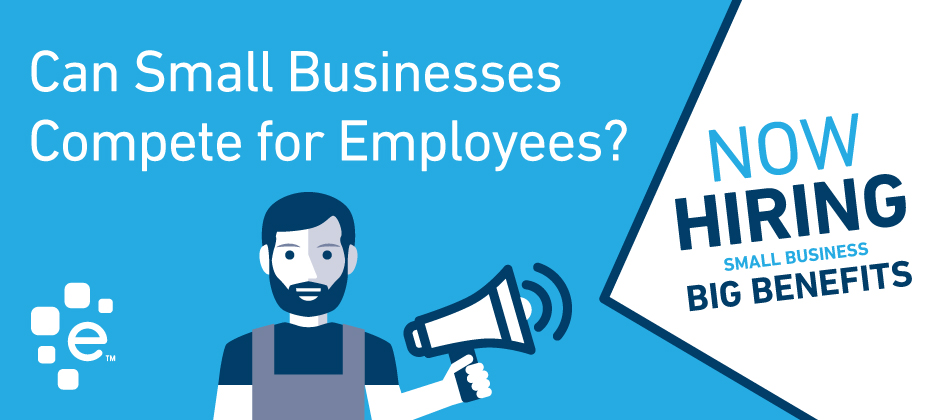
At a recent lunch outing, I was taken aback when an employee of the Ike’s Love & Sandwiches shop asked me if I would like to add $.75 to my order so that they could get health benefits. I left a message on the company’s website because I thought that was an unusual question and moments later one of the company’s owners, Sam, called to explain. Sam described the difficulties in trying to attract employees to his small business. Health benefits are attractive to job seekers but often too expensive for small business owners. With minimum wage hikes of recent years, businesses with more than 26 employees are finding it tough to be competitive. But that’s not stopping them from finding clever ways to still offer health benefits - just make it part of the transaction by asking customers if they would like to add a surcharge. This enables Sam to avoid raising the prices of the sandwiches. Those who don’t mind the charge are helping Sam’s employees get health benefits they would not ordinarily receive. Small Business Hiring Trends A recent report from NFIB revealed that Small Business Optimism continues to trend positive. Small businesses are breaking a 45-year-old record in job openings, job creation and plans to hire. The report also reveals that nearly a quarter of small business owners are struggling to find qualified workers. With the continued rise in small business growth, 24% of those looking to hire report it’s even harder to find talent than just 5 years ago. Competition means that business owners have to be even more innovative to attract talent and afford candidate demands. Attracting Top Talent from Big Names Indeed’s 2018 Small Business Survey showed that 37% of small to medium businesses compete with big-name companies by offering higher salaries. Higher salaries can be challenging to business cash flow, so small businesses are being creative with offerings such as: The ability to grow with an advance quickly within the organization Telecommuting or working from anywhere Flextime Generous vacation policies Open or unlimited paid time off Younger job seekers and Millennials are also searching for meaningful work and authentic connections with co-workers. Small businesses have the edge when it comes to candidates looking for career potential instead of simply blending in with a large corporate structure. Employees want to feel like they’ll have an impact and a bright future with an employer that cares about them as individuals. Inventive, Low-Cost Perks While it was interesting to see how Ike’s sandwich shop paid for employee benefits, startups and entrepreneurs have discovered unique perks to attract job seekers at a low cost. These benefits provide employees with positive and happier feelings about their place of work as well as attracting new candidates. Pet-friendly - A 2018 study revealed that workplaces that allowed pets and/or offered pet insurance retained employees longer, employees took fewer sick days and they felt more engaged in their jobs. Summer hours - Four day work weeks during the summer allow employees to take advantage of vacation and travel plans. Fitness/Wellness - Offering to pay for part of a fitness program, gym membership or healthy choices in the break room, these perks can keep employees healthy and motivated. Telehealth options - Without the hefty cost of health insurance, telehealth offers healthcare services via a mobile device, typically through apps. Free food & drinks - Some businesses not only have a fully stocked kitchen, but they may also even provide beer for those post-work happy hours. Commuter benefits - A small monthly stipend to pay for public transportation or gas can also be attractive to help pay for the cost of getting to work. Online Career Training - Spotlighting career development dramatically improves employee retention and attracts job seekers. 401K plan - There are plenty of 401K plans for small business to offer as an employee benefit, with or without matching. Casual dress code - As simple as it seems, allowing employees to dress as they would like is almost expected from younger job candidates. Litzky PR, a small firm in New Jersey, offers extra time off for wedding planning. Columbus, OH marketing agency, Postali, give a monthly Starbucks allowance. The Catch Co, whose mission is to encourage more time outdoors, allows their employees more outdoor time with company outings and unlimited vacation. Successful entrepreneurs are competing for talent by re-imagining work/life balance and what coming to work should feel like in 2018. With a little creativity and a lot of heart, fostering an employee-friendly work environment can be the thing that sets your business apart from others who are competing for the same talent.
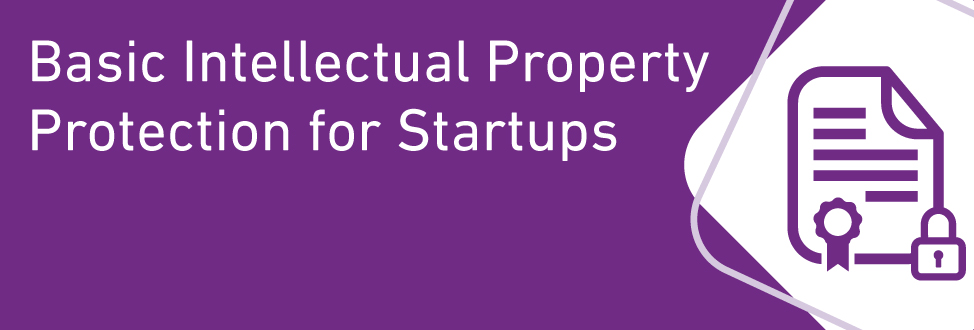
Failing to seek IP protection may put your small business at a competitive disadvantage, so in this guest post we include some basic IP tips.
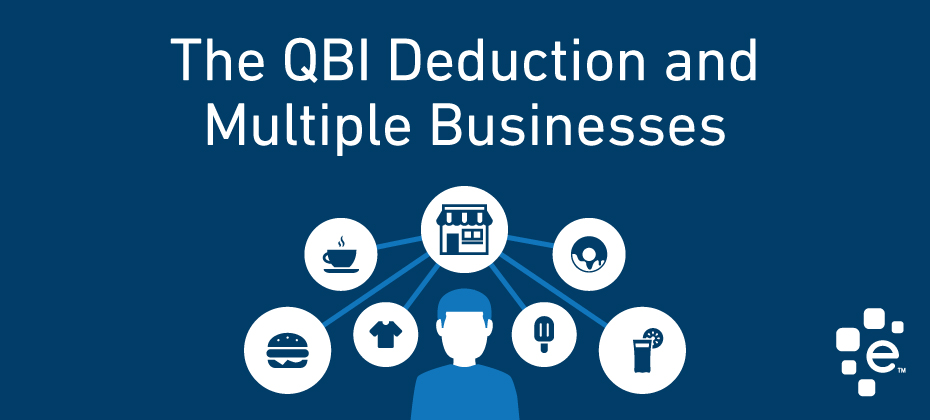
The Qualified Business Income Deduction is part of the recently revised business tax code. In this guest post, leading author and tax expert, Barbara Weltman how business owners with multiple businesses can approach the QBI deduction. You can find more blogs by Barbara on her blog Big Ideas for Small Business. The qualified business income (QBI) deduction provides a significant opportunity for business owners to slash their federal income tax bill. Designed to lower the effective tax rate on owners of pass-through entities, the write-off can be as much as 20% of QBI. But various limitations come into play that can reduce or bar the deduction. For a basic primer on QBI, read my earlier post "Understanding The New Qualified Business Income Deduction." If you are a business owner with an interest in multiple businesses, you should read on. The good news is, you may be able to aggregate them to optimize their deduction. The bad news: certain businesses may not be able to break up in order to use the deduction, more on that part later. So here are some of the points to note in putting businesses together or taking them apart in order to get the biggest QBI deduction possible. Aggregating businesses Usually, if you own businesses directly (a sole proprietorship or single-member limited liability company, or LLC) or have interests in S corporations, partnerships, or limited liability companies (LLCs), you figure the deduction for each business and then combine them for a single entry on your tax return. But you may be able to lump your business numbers together in figuring your QBI deduction. This may allow you to take a larger deduction than if you didn’t aggregate your business interests. If eligible, you can aggregate your interests, regardless of what your co-owners do with their interests. To qualify for aggregation, you must meet all 5 conditions: The same person or group of persons own (directly or indirectly) 50% or more of each business being aggregated. The 50% or more ownership exists for more than half the year. All tax items attributable to each business are reported on tax returns with the same tax year end (e.g., all businesses use a calendar year). None of the businesses are a specified service trade or business, or SSTB (any trade or business involving the performance of services in the fields of health, law, engineering, architecture, accounting, actuarial science, performing arts, consulting, athletics, financial services, brokerage services, or any trade or business where the principal asset of such trade or business is the reputation or skill of one or more of its employees or owners). The businesses being aggregated satisfy at least 2 of these 3 requirements: (a) the businesses provide products and services that are the same (e.g., a restaurant and a food truck) or customarily provided together (e.g. a gas station and a car wash), (b) the businesses share facilities or significant centralized elements (e.g., personnel, accounting, legal, manufacturing, purchasing, human resources, or information technology services), and (c) the businesses operate in coordination with or reliance on each other (e.g., they have supply chain interdependencies). Other key points: Assuming eligibility, you can choose to aggregate some of your businesses and not others. The aggregation of businesses for purposes of the passive activity loss rules has no impact on aggregation for the QBI deduction. If one of the businesses being aggregated produces a negative QBI, each business with a positive QBI must be offset by a portion of the negative QBI. But W-2 wages and the unadjusted basis immediately after acquisition (UBIA) of qualified property from a business that has a negative QBI aren’t taken into account in figuring the QBI limitation. If there’s an overall negative QBI for the year, it is treated as a loss from a qualified business in the following year (the loss continues to haunt you). An election to aggregate businesses means they must continue to be aggregated in the future. New businesses can be added to the aggregated group. But if things change for businesses within the group (e.g., ownership drops below 50%), they may no longer qualify for aggregation. Each year you must attach to your return a statement identifying each business being aggregated. If you don’t, the IRS can “disaggregate” the businesses. Chopping up businesses Specified Service Trade Businesses's (SSTB's) with owners having high taxable income that would otherwise bar them from taking a QBI deduction may have thought they could separate out some functions in an attempt to qualify those separate parts as non-SSTBs. For example, it had been suggested to remove administrative functions or building ownership into a separate business to at least get the QBI deduction for this business. While having separate businesses is certainly allowed, the IRS has effectively killed the idea of chopping up businesses in certain situations in order to get the QBI deduction. An SSTB includes any trade or business with 50% or more common ownership that provides 80% or more of its property or services to an SSTB. If a trade or business has a 50% or more common ownership with an SSTB, to the extent it provides property or services to the commonly-owned SSTB, the portion of the property or services is treated as income from an SSTB. Even if a business would not otherwise be an SSTB but has 50% or more common ownership with an SSTB and shared expenses (e.g., wages, overhead expenses), it is treated as incidental to an SSTB if its gross receipts are modest. More specifically, the trade or business will be treated as an SSTB if its gross receipts represent no more than 5% of the gross receipts of the combined businesses. Bottom line The QBI deduction is a wonderful way to reduce your tax bill because it doesn’t cost you anything to get it (you don’t need to expend any money); it’s yours if you qualify. For the vast majority of business owners, the deduction is rather straightforward. But qualifying for the deduction becomes a complicated matter for anyone with taxable income over $315,000 on a joint return or $157,500 on any other return. Check with your tax advisor to learn more about how you can qualify for this write-off. Learn more about the QBI Deduction at our upcoming webinar with Barbara Weltman October 2nd.
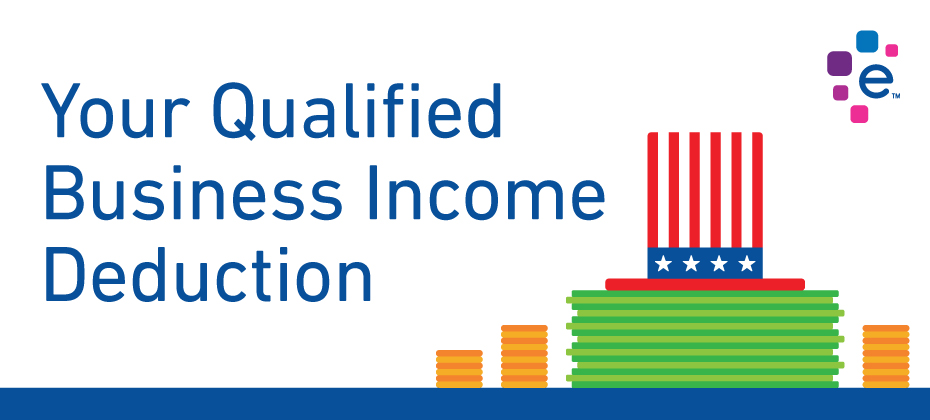
The IRS recently released more details about the Qualified Business Income Deduction, a new tax regulation that will impact small business owners. In this guest post, leading author and tax expert, Barbara Weltman shares first impressions on the regulation and potential impact for small businesses. You can find more blogs by Barbara on her blog Big Ideas for Small Business. If you own a pass-through entity—sole proprietorship, partnership, limited liability company, or S corporation—you may be eligible for a new tax deduction. It is a significant tax reduction for business owners who qualify for it. But it isn’t simple because numerous limitations and acronyms come into play. The following is a brief introduction to the qualified business income deduction. Overview Referred to as the Section 199A deduction (the section in the Tax Code for it), the qualified business income (QBI) deduction runs from 2018 through 2025. You don’t have to expend any capital or take any special action; if you qualify for the deduction you get it. But the bad news is that there’s new terminology and calculations for limitations on the deduction which can be daunting. The deduction does not reduce your business income and does not reduce your net earnings for self-employment tax if you’re self-employed. It does not reduce your gross income as does other business-related expenses, such as retirement plan contributions on your behalf, health insurance for yourself, and one-half of self-employment tax. The deduction comes off your adjusted gross income in the same way as the standard deduction or itemized deductions (there’s a special line for the QBI deduction on Form 1040), effectively reducing the tax rate you pay on your business profits. For example, if you are in the 32% tax bracket and qualify for the deduction without any limitations, the effective tax rate on your QBI becomes 25.6%. What is QBI? The deduction is based on the amount of your qualified business income. This is essentially your profits from a pass-through trade or business. However, QBI does not include certain items that you do factor into your net income for determining what you pay income tax on. Items excluded from QBI are: Capital gains and losses (including Section 1231 gains) Dividend income Interest income Reasonable compensation paid to S corporation owner-employees Guaranteed payments to partners for services rendered to the business What is the QBI deduction? If your taxable income is no more than $157,500 if single or $315,000 if married filing jointly, then your deduction is 20% of QBI. The deduction cannot exceed your taxable income minus any capital gains. For example, if you are a sole proprietor with a net profit of $90,000 (and no excluded items) on your Schedule C and your taxable income is $100,000 (no capital gains), your QBI deduction is $18,000 ($90,000 x 20%). What limitations apply? Once your taxable income is higher than the taxable income threshold for your filing status, then various limitations come into play. The exact formula for determining the deduction (there are special rules for income from REITs and publicly traded partnerships that is not explained here) is the lesser of: 20% of your QBI, or The greater of (a) 50% of W-2 wages or (b) the sum of 25% of W-2 wages plus 2.5% of the unadjusted basis immediately after acquisition (UBIA) of qualified property. In addition to the W-2 limitation and the property limitation, there is a special limitation for a specified service trade or business (defined below). Only a percentage of QBI, W-2 wages, and the unadjusted basis of property can be taken into account. Once an owner of a specified service trade or business has taxable income over $207,500 if single, or $415,000 if married filing jointly, then this limitation means no deduction can be claimed. What are the special terms to know? There are a number of special terms you need to know in order to figure the deduction: W-2 wages. These are wages reported on W-2s to employees (including wages to S corporation owner-employees), plus elective deferral contributions to 401(k)s and similar plans and certain deferred compensation. Specified service trades or businesses (SSTBs). These are any trade or business involving the performance of services in the fields of health, law, accounting, actuarial science, performing arts, consulting, athletics, financial services, brokerage services, or any trade or business where the principal asset of such trade or business is the reputation or skill of one or more of its employees or owners (a catchall category). Architecture and engineering are specifically not included in the list of fields. Fortunately, the IRS has narrowly construed the meaning of the catchall category so that the skill or reputation of an owner will be an SSTB only if the person receives payment for endorsing products or services, licensing the taxpayer’s images, or receiving fees for media appearances. For instance, a chef who owns restaurants and also endorses a line of cookware, only the income from the endorsement will be treated as an SSBT; the income from the restaurants won’t be tainted and subject to the SSBT limitation. Unadjusted basis immediately after acquisition (UBIA) of qualified property. This is essentially the cost of depreciable tangible property as of the date it’s placed in service. So if your sole proprietorship buys a $10,000 machine and begins to use it on March, 1, 2018, you have UBIA of $10,000, even if you write-off the entire cost on your 2018 return. Conclusion If you think the QBI deduction sounds complicated, then you are correct. Fortunately, the actual computation of the deduction is done automatically by software. The important concepts to understand are the overall landscape of the deduction and the new terms that come into play. An upcoming post will provide more guidance on grouping and splitting businesses and other aspects of this complicated but very important deduction. Stay tuned! Attend our webinar
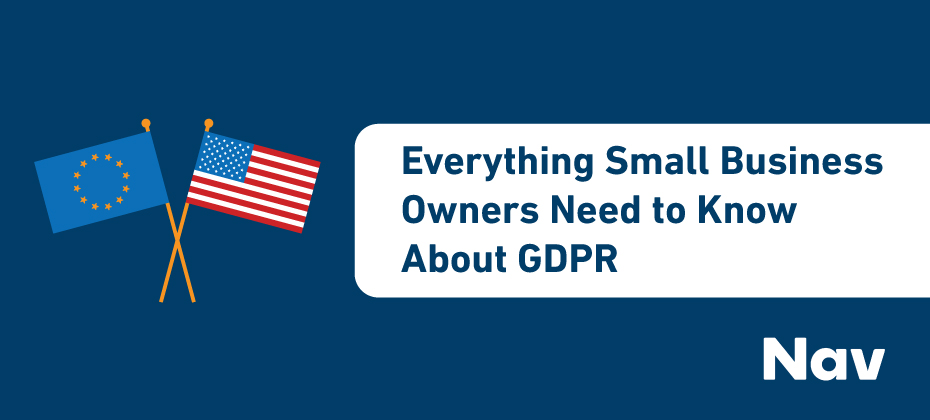
News of the General Data Protection Regulation (GDPR) has been floating in our peripherals since it was passed by the European Parliament back in 2016, but as of May 25, 2018, the privacy-focused piece of legislation will finally go into effect. And, though it’s specifically designed for those in the EU, American business owners are not exempt from impact. As an American business owner with your own set of privacy rules and regulations to contend with, the GDPR may not seem like much of a concern. However, since the regulations impact all organizations that process or hold EU customer data, any American business that falls into that category (i.e., businesses that have a web presence and/or sells their products to citizens within the EU) will need to comply. You’ll note that “web presence” was included, not just the notion of selling products or services. That’s specifically because of stipulations that focus on the collection of personal data, not just monetary transactions So, any organization that collects identifiable information (PII), which includes social security numbers, phone number, salary, race, marital status, military rank or civilian grade, age, medical records etc., from EU citizens will need to be in compliance. Top GDPR Takeaways for Small Businesses You know what the GDPR is, generally, but what specific things will be required of businesses? Here are a few of the most significant regulations and considerations that you’ll need to take into account if you want to be in compliance. Seventy-two-hour breach notification: Just like it sounds, any organization or company that detects a customer data breach must notify the national authorities within seventy-two hours of that breach, and in some cases, customer notification must also take place. Consent for data is a must: Companies and organization must obtain explicit and informed consent when collecting and/or processing data from individuals, even if it’s something as simple as an email list. Explicit consent should be used if an organization wants to validate the sensitive data for use. Additionally, the consent must be achieved with a clear affirmative action, which means that those companies can no longer use “opt-out” or pre-checked boxes to achieve that consent. Further, consent requests must be separate from terms and conditions; cannot, in most cases, be a contingency for signing up; must be granular or designed in such a way that consent is specific to each type of processing; and named, meaning the individual must be made aware of what organizations or third-parties rely on that consent. Finally, organizations must document the aforementioned consent, including the specific consent requested/provided and when that consent took place, individuals must have the right to withdraw their consent at any time, and organizations must provide information about how an individual can withdraw their consent as well as an easy path to do so. The right to be forgotten: organizations and businesses must comply with a request by an individual to “be forgotten” or to have a copy of their data. Though simplistic in theory, the right to be forgotten will require that all organizations be able to delete not only primary data but also any data duplications, be they due to operational processes (i.e., cloud storage backup) or unspecified employee lead duplication. This will require universal conversations and policies among all departments and employees who can access, copy or otherwise maintain customer data. Any data processed for a child under sixteen is considered unlawful if there is no prior parental consent; however, states within the EU can opt to reduce that age, with 13 years of age representing the cutoff. The aforementioned are just a few of the more specific requirements that business owners must meet if they want to become compliant with the GDPR. Some of these requirements may take a few weeks (or months) to plan and execute, and so, as mentioned above, it’s best to start as soon as possible if you haven’t already. To get started, or make sure your efforts are aligned with expectations, considering the following steps. Analyze your current data processes; this includes how you obtain data as well as how you process and maintain that data. If you don’t have one already, you should have a Personal Information Assessment (PIA), and in some cases, you may need a Data Protection Impact Assessment. Work with your legal department to fully understand and address the GDPR requirements (like the DPIA; however, efforts should extend past legal departments or consultants and include contact with multiple departments, including IT, Marketing, and Finance, as many are directly involved or involved. Create a plan, not only for immediate compliance, but for long-term data procurement, management, and processing. The end result should be a data privacy and security plan that can act as guidance for the future operations as well as documentation for compliance. Companies that don’t comply (or document that compliance) with the GDPR face substantial fines of up to four percent of global revenues. And while that amount can be damaging to any organization, small businesses that depend on every cent may suffer the most from non-compliance. During the next little while, your time will be especially precious as you work to ensure your business is compliant. The average business owner spends 33 hours applying for credit, you can save that time by checking with Nav. If you’re not currently compliant and the May 25th date is giving you anxiety, take a deep breath. Garnter, Inc. suggests that by the end of 2018, more than fifty percent of American businesses will be non-compliant. Of course, that doesn’t mean that herd mentality will protect you from non-compliance in the event of a data breach – we all know how frequent they are these days. For that reason, it’s important to address the issue immediately and take the steps required to meet GDPA requirements More from Nav The Best Small Business Checking Accounts Your Ultimate Guide to Small Business Loans What Is Cash Flow This article originally appeared on Nav.com. Jennifer is a alum of the University of Denver. While in the graduate program there, she enjoyed spending time identifying ways in which non-profits and small businesses could develop into strong and profitable organizations that while promoting strong community growth. She also enjoys finding unique ways for freelancers and start-up businesses to reach and expand their goals. More by Jennifer Lobb

In this post, Experian takes a closer look at specific challenges women business owners face gaining access to capital for their business.
